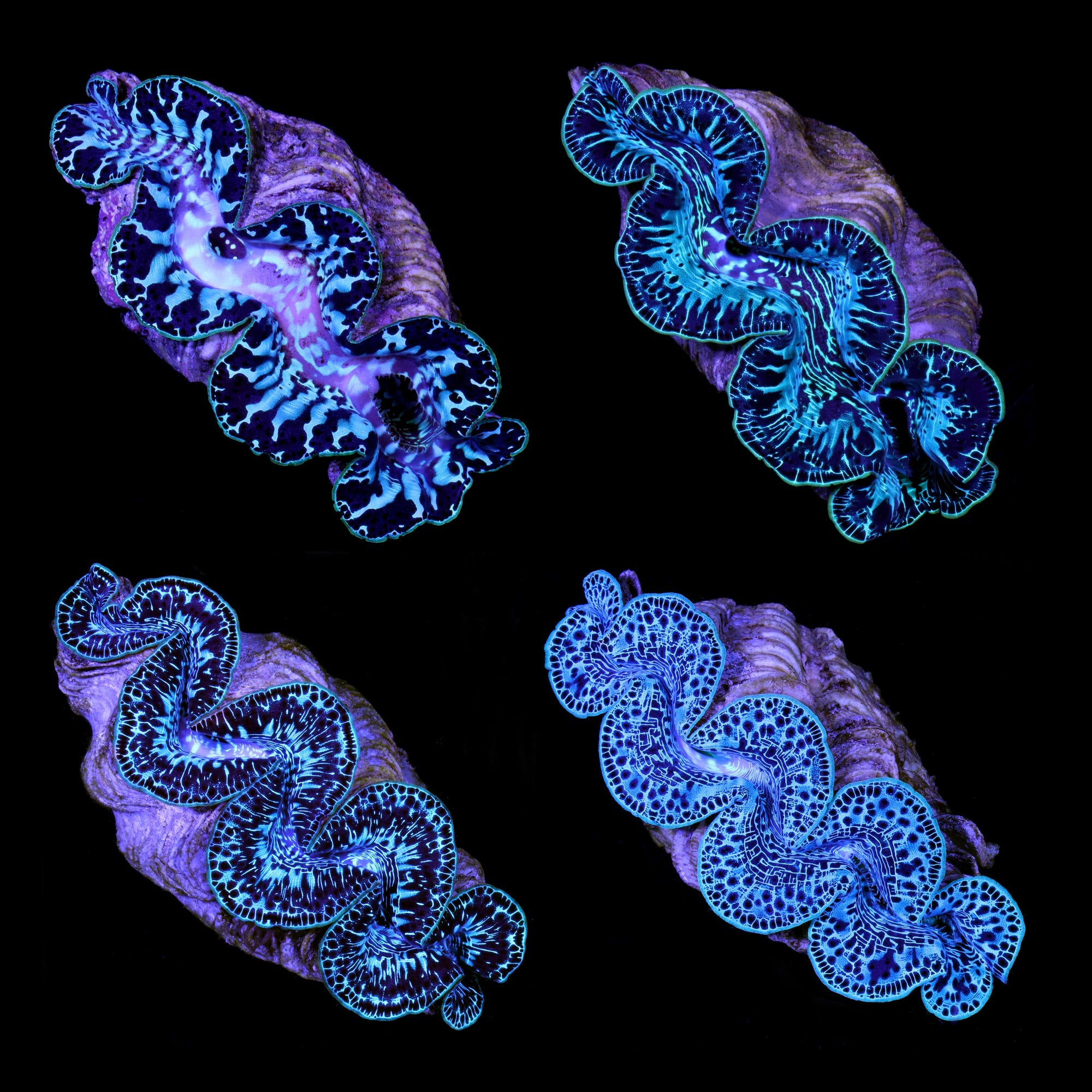Year End Clearance Sale 50% Off All Corals
Free Shipping Over $249 or $29.99 for Orders over $100
Blue Maxima Clam - Assorted
$ 199.99
Please select all options.
How to Care for Maxima Clam
Tridacna maxima has the widest distribution of any Tridacnid species. It is found from the Red Sea, throughout the Indo-Pacific region, to Australia and Polynesia. It usually occurs in shallow, clear water, high current areas where they are known to form high-density populations. They will attach to the substrate with threads from the byssal organ.
Maxima clams have many different colors and patterns. They require high light levels in the aquarium and are best placed high in the tank, close to the lights. They prefer rocky substrate to attach to. The reflection of colors will change as one views the mantle from different angles.
Lighting & Flow Requirements: Maxima Clams require moderate water flow and moderate lighting (PAR 180-300). T5's, Metal Halides, or LED's can all grow Maxima Clams when the proper PAR levels are provided. We recommend a 14-20K color spectrum for best coloration.
Placement: Place the Maxima Clam in the sand, or in a rock crevice, in the lower half of the aquarium where they will receive moderate currents and moderate lighting.
Feeding: Although symbiotic algae called zooxanthellae hosted within them supply most of their nutritional requirements through photosynthesis they do benefit from supplemental feedings Phytoplankton. Target feeding gets the clam fed using less food while keeping your nitrates and phosphates lower.
Care Level: Easy
Lighting Requirements: Moderate (PAR 180-300)
Water Flow: Moderate
Aggressiveness: Peaceful
Range: Indo Pacific
Family: Tridacnidae
Water Conditions: 75-80° F; sg 1.024-1.026 (1.025 is ideal); pH 8.1-8.4 Ca 420-440 ppm, Alk 8-9.5 dKH, Mg 1260-1350, Nitrates <10ppm, Phosphates, < .10ppm
Water Chemistry: It is important that proper calcium (420-440 ppm), alkalinity (8-9.5 dkh - run it 7-8 if you are carbon dosing) , and magnesium levels (1260-1350 ppm) are maintained. Raising magnesium levels gradually up to 1400-1600 ppm can help to combat algae outbreaks, just keep CA and Alk in line as you raise the Mg. Nitrates should be below 10 ppm and phosphates should be below .10 ppm. We recommend doing a water change when Nitrate levels rise to 10 ppm. It is important to replace your phosphate media when phosphates rise to .10 ppm. Media Reactors make the most efficient use of your phosphate media by fluidizing it.
Dosing: Vivid Aquariums uses and recommends dosing pumps to automate the dosing of additives and keep your levels more constant. A dosing pump can alleviate the chore of manually dosing your aquarium with Ca, Alk, & Mg 2,3, or 4 times per week and will benefit your aquarium by keeping your levels constant through frequent small additions of Ca, Alk, & Mg. Our tanks all progressed when we switched from 3 manual dosings per week to 70 automatic dosings per week and we got a lot more work done.
Category: 150-300, Clams, easy, moderate-lighting, tridacna-derasa
Type: Invert


